Empowering Business Success: AIOps for Predictive Capacity Planning in IT Infrastructure
In an era where digital transformation is reshaping industries, the role of IT infrastructure in driving business success cannot be overstated
Read moreThe critical significance of AIOps for transforming IT operations lies in its ability to drive proactive issue resolution, enhance operational efficiency, and enable data-driven decision-making. By embracing AIOps technologies, organizations can navigate the complexities of modern IT landscapes, unlock operational synergies, and position themselves for sustained success in a rapidly evolving digital ecosystem.

Next-generation application management fueled by AIOps is revolutionizing how organizations monitor performance, modernize applications, and manage the entire application lifecycle.
Automation in IT operations enable agility, resilience, and operational excellence, paving the way for organizations to adapt swiftly to changing environments, deliver superior services, and achieve sustainable success in today's dynamic digital landscape.
AIOps and analytics foster a culture of continuous improvement by providing organizations with actionable intelligence to optimize workflows, enhance service quality, and align IT operations with business goals.
AIOps platforms are fast becoming a critical component of modern IT operations, helping organizations drive agility, resilience, and innovation. By combining big data, machine learning, and automation, AIOps empowers organizations to proactively detect and resolve issues, predict future problems, and enhance overall performance. But how exactly does it matter?
Here are some top use cases of AIOps:

Ready to harness the power of AI-driven insights for your business? Check Quinnox’s powerful AIOps Platform, Qinfinite Here
AIOps integration involves leveraging AI, machine learning, and advanced analytics to enhance monitoring, incident management, and performance optimization across complex IT environments. By seamlessly integrating AIOps capabilities into your existing systems, you can unlock a myriad of benefits that streamline operations, improve decision-making, and drive innovation.
Integrating AIOps tools automates the monitoring of IT resources, applications, and services in real-time. By leveraging AI algorithms, organizations can receive intelligent alerts, predict potential incidents, and automate responses to critical events. This proactive approach minimizes downtime, reduces manual intervention, and enhances overall system reliability.
FinOps, is a practice that aligns finance, operations, and engineering teams towards optimizing cloud spending in a business. It aims to ensure that cloud resources are used efficiently and cost-effectively, without sacrificing performance or reliability.
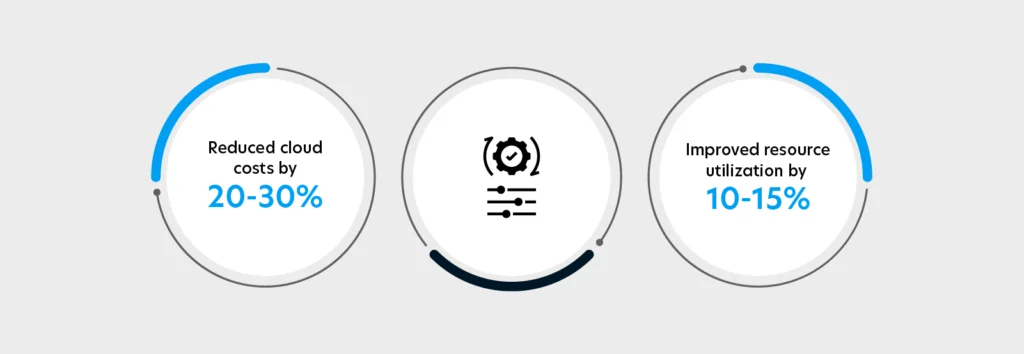
Don’t let cloud bills hold your business back. Start your FinOps journey today!
Hybrid cloud environments, blending on-premises infrastructure with public cloud services, offer businesses flexibility and scalability. However, managing these complex ecosystems can overwhelm traditional IT Service Management (ITSM) tools.
AIOps acts as a game-changer, transforming ITSM in these dynamic environments. IDC predicts that by 2025, nearly 80% of infrastructure and application monitoring will be conducted using AIOps. This underscores the growing significance of AIOps in the hybrid cloud era. But how?
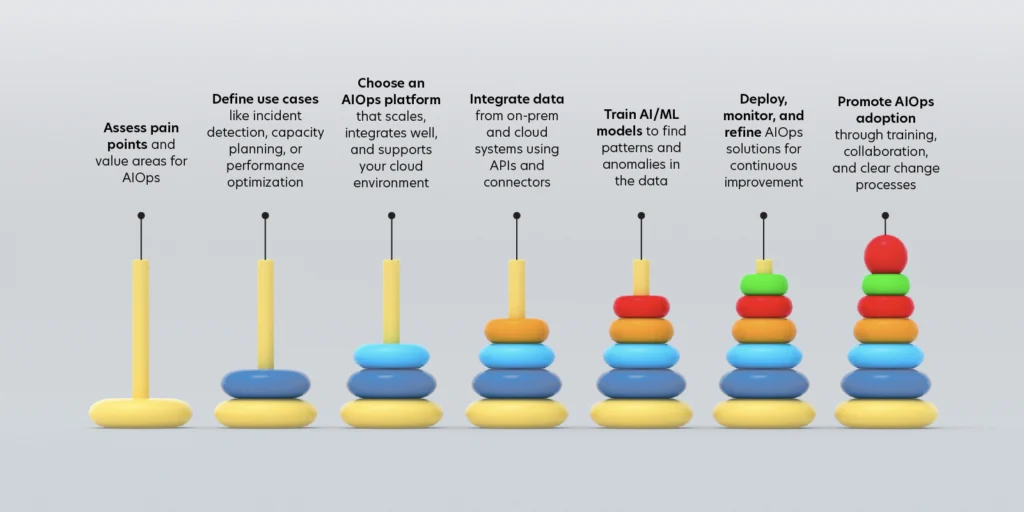
By embracing AIOps within ITSM frameworks, organizations can unlock the full potential of hybrid cloud environments, driving agility, efficiency, and resilience in the face of evolving technology landscapes.
Quick Insight: “AIOps can help automate network anomaly detection, reducing alert fatigue by 70% and freeing up IT staff to let them focus on strategic initiatives.”
Site Reliability Engineering (SRE) and Artificial Intelligence for IT Operations (AIOps) converge at the intersection of automation, proactive monitoring, incident response, scalability, continuous improvement, and operational efficiency. SRE teams leverage the predictive analytics and automation capabilities of AIOps to enhance system reliability by proactively detecting anomalies, predicting potential issues, and automating incident response processes.
By integrating AIOps tools into their workflows, SRE teams can efficiently manage system scalability, optimize performance, and drive continuous improvement through data-driven insights. This collaboration empowers organizations to maintain highly reliable and scalable IT systems, enabling them to adapt to evolving demands and deliver exceptional user experiences in a fast-paced technological landscape.
The combined approach presents significant benefits to the businesses:
Improved Reliability: By implementing SRE principles, organizations can achieve higher levels of reliability and availability, reducing the risk of costly downtime.
Efficient Operations: AIOps tools can automate mundane tasks, such as log analysis and anomaly detection, allowing IT teams to focus on strategic initiatives rather than firefighting.
Scalability: SRE emphasizes designing systems for scalability, while AIOps helps in identifying scalability issues proactively, enabling businesses to handle increased loads seamlessly.
Cost Savings: By preventing downtime and optimizing resource utilization, businesses can realize significant cost savings over time.
Don’t wait for IT emergencies to become business disruptions. Embrace the combined power of SRE and AIOps for a future-proof IT operation. Take the first step towards this evolution today!
AIOps algorithms excel at processing vast amounts of data in real-time, identifying patterns, anomalies, and correlations that might elude human operators. When paired with distributed tracing data, these algorithms can dynamically allocate resources based on actual usage patterns, predict future demands, and optimize resource distribution across a distributed environment.
“A study by Gartner found that businesses can achieve up to 30% cost reduction through effective resource optimization.”
Distributed tracing is a method used in software development and systems management to track and monitor the flow of requests as they travel through various microservices or components of a distributed application. It allows developers and system administrators to visualize and understand the path a request takes across multiple services, providing insights into performance bottlenecks, latency issues, and dependencies between different parts of the system.
The synergy between AIOps and distributed tracing empowers organizations to scale their infrastructure efficiently by identifying underutilized resources, optimizing workload distribution, and anticipating capacity requirements. This strategic utilization of resources not only improves system scalability but also leads to cost savings by preventing overprovisioning and maximizing resource efficiency. For instance, a leading e-commerce platform leveraged AIOps-driven resource optimization with distributed tracing that helped them achieve a 20% reduction in cloud infrastructure costs while maintaining exceptional application responsiveness during peak sales seasons.
Do you want to see how much your business can save with AIOps! Try our AIOps value calculator here.
Synthetic monitoring involves simulating user interactions with applications to proactively detect performance issues. AIOps, on the other hand, leverages artificial intelligence and machine learning to analyze vast amounts of data for anomaly detection and root cause analysis. By merging synthetic monitoring with AIOps, organizations can gain a comprehensive view of system performance, combining proactive synthetic tests with AI-driven insights to identify and address potential issues before they impact end-users.
As digital environments grow increasingly complex and dynamic, the integration of synthetic monitoring and AIOps becomes crucial for managing scalability challenges, proactive performance optimization and intelligent insights.
Root Cause Analysis: Root Cause Analysis is a foundational practice in AIOps that focuses on identifying the underlying reasons behind incidents, outages, or performance degradation within IT systems. By correlating data points, tracing dependencies, and analyzing historical patterns, organizations can pinpoint the root causes of issues and prevent recurrence through targeted remediation actions. It serves as a guiding light in troubleshooting complex problems, enhancing system resilience, and improving overall operational stability.
Anomaly Detection: Anomaly Detection leverages AI algorithms and machine learning techniques to identify deviations from normal system behavior or expected patterns. By continuously monitoring metrics, logs, and events, Anomaly Detection algorithms can flag unusual activities, outliers, or potential threats that may indicate underlying issues or impending disruptions.
MTTR (Mean Time To Repair): MTTR quantifies the average time taken to resolve incidents or outages from the moment they are reported until full restoration of services. A key performance indicator in IT operations, MTTR reflects the efficiency of incident management processes, the effectiveness of response strategies, and the overall agility of the IT organization in addressing disruptions.
By integrating AIOps practices such as Root Cause Analysis and Anomaly Detection, organizations can streamline incident resolution workflows, accelerate problem diagnosis, and drive down MTTR to ensure swift recovery and minimal impact on business operations.
To know more about how Quinnox’s next-gen AMS platform, Qinfinite helps businesses reduce MTTR by up to 80%, read this blog here.
According to Gartner, businesses that effectively harness telemetry data can reduce downtime by 50% and increase operational efficiency by 25%.
In the modern business environment, companies increasingly rely on data-driven insights to refine their decision-making strategies. The capacity to gather, analyze, and extract valuable insights from substantial data sets not only fuels sustainable growth but also nurtures innovation within your organization.
Telemetry collects data from various sources, such as network devices or applications, providing a continuous stream of information. AIOps processes this telemetry data using artificial intelligence and machine learning algorithms to identify patterns, anomalies, and potential issues. By integrating telemetry with AIOps, businesses can achieve enhanced operational visibility, predictive insights, and automated remediation to make informed decisions and address issues promptly.
For instance, through the analysis of telemetry data derived from machinery and equipment, organizations can identify early signs of equipment failure, enabling them to proactively plan maintenance schedules, minimize downtime, and allocate resources strategically. Furthermore, integrating AIOps with telemetry offers significant benefits to businesses across various areas.
As per Forrester reports, organizations leveraging AIOps see a 15% reduction in mean time to repair (MTTR) and an 18% increase in service uptime. While AIOps harnesses artificial intelligence to automate tasks, detect anomalies, and provide predictive insights, enhancing operational efficiency and decision-making, observability complements this by offering a deep understanding of system behavior and performance through real-time data analysis. AIOps and observability are transformative tools for businesses navigating complex IT environments.
For organizations grappling with the challenges of intricate IT landscapes, the combined power of AIOps and observability offers proactive monitoring, rapid issue resolution, and optimized resource allocation. However, implementing AIOps and observability solutions for the first time can be challenging for organizations. Hence, developing the right approach to support your AIOps strategy becomes crucial to help address your enterprise’s specific IT complexity and goals.
A Successful initiative in AIOps and observability should be well designed, architected and must provide continuous insights to help organizations assess their progress, make adjustments, and drive operational objectives.
If navigating the complex landscape of AIOps platforms has been challenging for your organization, read the Gartner® report: Deliver Value to Succeed in Implementing AIOps Platforms
Digital twins provide a virtual mirror of physical assets or processes, facilitating real-time monitoring and analysis. When coupled with AIOps, which utilizes AI for operational insights, businesses gain a comprehensive understanding of their operations, enabling proactive maintenance, predictive analytics, and optimized performance. This integrated approach enhances decision-making, streamlines operations, and fosters innovation, ultimately leading to transformative business outcomes.
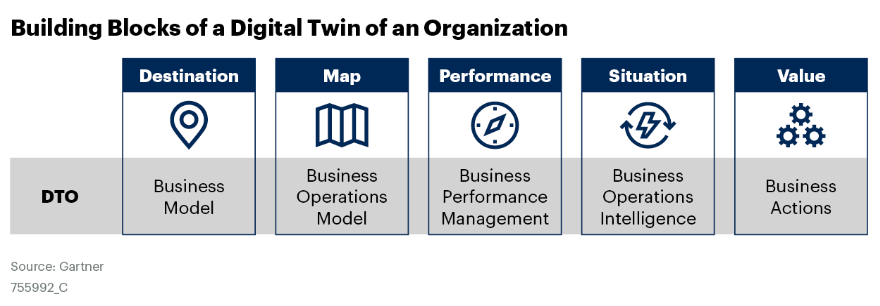
By leveraging the power of digital twin technology and AIOps, organizations can adapt to modernization challenges, enhance agility, and stay ahead in today’s dynamic business landscape. Integrating the predictive capabilities of AIOps with the rich data and simulation features of digital twins, organizations can proactively identify issues, predict maintenance needs, and optimize performance to reduce downtime and improve productivity in an increasingly digital landscape.
Watch Forrester webinar on AIOps and Intelligent twin for expert insights here.
Data modeling is the art of uncovering, dissecting, and translating data needs into actionable insights for both business operations and software applications. It’s the foundation upon which smart workflows are built, seamlessly integrating humans and machines into a symphony of efficiency.
According to Gartner, businesses that effectively harness telemetry data can reduce downtime by 50% and increase operational efficiency by 25%.
By combining data modeling with AIOps, businesses can unlock actionable insights, streamline decision-making processes, and proactively address IT challenges, ultimately leading to improved system performance and enhanced user experiences.
Data modeling serves as a catalyst for enhancing operational efficiency within your organization. By scrutinizing operational data, you can identify bottlenecks, streamline processes, and allocate resources effectively.
Through the customer feedback and analytics, data modeling empowers you to delve deep into customer behavior and preferences. Armed with these insights, you can craft personalized offerings to deliver them a superior experience.
Create better business strategies with effective data-driven decisions, based on empirical evidence than intuition. Analyze past performance and predict future outcomes for better results for improved performance.
Therefore, as businesses increasingly rely on complex systems and processes, the need for a comprehensive solution that bridges the gap between business and IT operations becomes crucial. This is where BizOps, integrated into Quinnox’s AIOPs platform, Qinfinite, comes into play.
To know more about Qinfinite’s BizOps capabilities, read here.
As per McKinsey, poor data governance can waste up to 29% of employee time across enterprises. This is where knowledge graph helps organizations uncover valuable insights for effective management of data.
Knowledge graphs serve as a powerful tool for integrating disparate data sources, harmonizing information from diverse systems, and establishing meaningful connections between data points. By representing data in a graph format with nodes and edges, knowledge graphs enable a comprehensive view of data relationships, facilitating better data connectivity and interoperability within organizations.
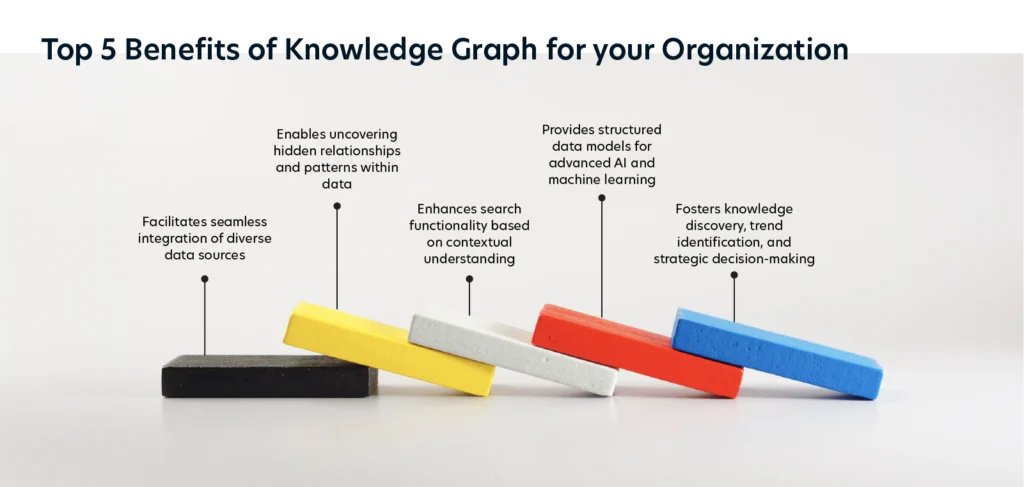
By incorporating knowledge graphs into AIOps workflows, organizations can map out intricate connections between IT components, identify potential bottlenecks, and predict issues before they manifest, thereby improving system reliability and operational efficiency.
Explore and visualize your IT ecosystem through our Knowledge Graph. Gain access to our sandbox here.
A Configuration Management Database (CMDB) stands as a cornerstone within the ITIL framework, serving as the central repository for cataloging and organizing crucial details regarding the objects, hardware, and software constituting your IT infrastructure. This structured data serves as a critical input for AIOps platforms, which leverage artificial intelligence and machine learning algorithms to analyze and interpret complex datasets in real-time.
By integrating CMDB data with AIOps capabilities, organizations can proactively monitor system performance, detect anomalies, automate incident response, and derive actionable insights for optimizing IT operations.
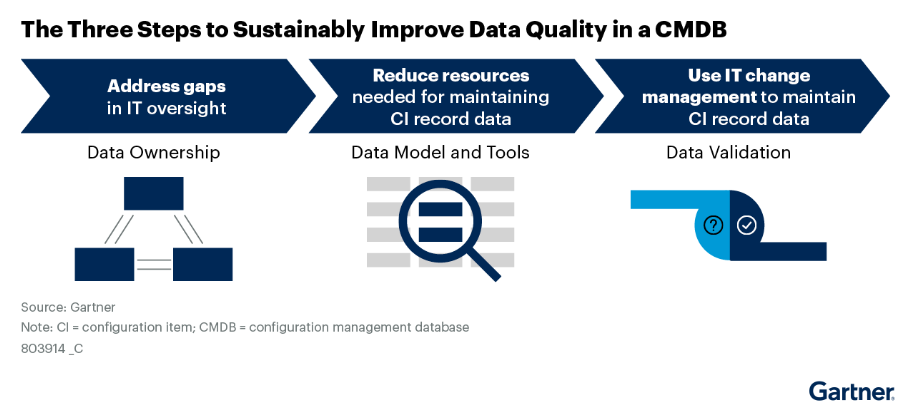
A CMDB can pave the way for proactive strategies, enhancing your insight into the technological terrain of your IT environment through:
Incident management is the strategic process that keeps service quality intact and operations running smoothly, even amidst the unpredictability of technological landscapes. By taking incidents on a seriously, teams unlock several benefits:
Turbocharged Efficiency and Productivity: Dedicated agent portals gather to tackle issues head-on, ensuring swift resolutions and minimal downtime.
SLAs: With robust processes in place, teams gain invaluable insights into SLA performance, fostering trust and confidence among stakeholders.
Speedy Mean Time to Resolution: With the cutting-edge AIOps integration, mean time to resolution (MTTR) gets slashed, allowing operations to resume at lightning speed.
By harnessing the power of AIOps, organizations can automate incident detection, categorization, and prioritization based on predefined rules and historical data trends. This automation can help streamline incident management processes, accelerate response times, and reduce manual intervention, ultimately leading to improved operational efficiency, minimized downtime, and enhanced user experiences.
Read more on how incident management coupled with automation can drive intelligence and foresight
Mainframe systems, known for their robust computing power and reliability, form the backbone of many critical business operations. However, managing these complex mainframe environments efficiently presents unique challenges due to their intricate configurations and dependencies. With AIOps, organizations can better analyze vast amounts of data generated by mainframe systems in real-time, enabling proactive monitoring, anomaly detection, and predictive insights into performance and potential issues.
By integrating AIOps with mainframe operations, organizations can automate monitoring, streamline incident management, optimize resource utilization, and enhance overall system reliability. This collaboration empowers IT teams to harness the power of AI-driven analytics to unlock hidden patterns, improve operational efficiency, and ensure the seamless performance of mainframe systems in today’s dynamic technological landscape.
Dynamic noise reduction technology aims to filter out irrelevant or redundant data from system alerts, logs, and monitoring tools, helping IT teams focus on meaningful insights and actionable information.

When integrated with AIOps platforms, dynamic noise reduction plays a crucial role in streamlining incident detection and response. By reducing the volume of non-essential alerts and false positives, AIOps systems can better prioritize incidents, improve anomaly detection accuracy, and facilitate quicker resolution times.
Digital Experience Monitoring (DEM) leverages various monitoring tools to track and analyze the end-user experience across digital touchpoints such as websites, applications, and services. When combined with AIOps capabilities, DEM gains enhanced analytical power and predictive insights across diverse IT environments, allowing organizations to proactively identify issues that could impact user experience.
Enhanced User Experience: Deeper insights into user behavior, preferences, and performance metrics, allowing for proactive optimization of digital touchpoints to enhance overall user satisfaction.
Improved Incident Response: Swift detection of anomalies and issues, leading to quicker incident resolution, minimized downtime, and ultimately ensuring uninterrupted digital experiences for users.
Predictive Insights: Timely forecast of potential issues before they escalate, enabling proactive measures to be taken to maintain seamless digital experiences and prevent disruptions.
Efficient Resource Utilization: Identifying areas for improvement, streamlining processes, and enhancing operational efficiency, resulting in cost savings and improved ROI.
Data-Driven Decision Making: Providing data-driven insights, trends, and patterns that facilitate informed decision-making, strategic planning, and continuous improvement of digital services to meet evolving user needs.
Scalability and Flexibility: Allowing organizations to adapt to changing IT environments, scale monitoring efforts as needed, and ensure consistent delivery of high-quality digital experiences across diverse platforms and devices.
For more insights on digital experience monitoring, read here.
Both no-code platforms and AIOps focus on automation but in different contexts. No-code platforms enable users to build applications and workflows without the need for traditional programming, simplifying task execution. On the other hand, AIOps automates IT operations tasks like monitoring, incident response, and predictive analytics, leveraging AI and machine learning for intelligent automation.

The integration of no-code platforms with AIOps can lead to enhanced operational efficiency and agility. For example, no-code platforms can be used to build customized dashboards or reporting tools that integrate seamlessly with AIOps systems, providing real-time visibility into IT environments and enabling quicker decision-making based on actionable insights.
Serverless computing eliminates the need for organizations to manage servers, allowing them to focus on code deployment and execution without worrying about infrastructure maintenance. AIOps on the other hand enhances serverless environments by providing proactive monitoring, anomaly detection, and intelligent resource allocation, enabling organizations to achieve scalability, reliability, and efficiency in dynamically changing IT landscapes.
The combination of serverless and AIOps ensures that IT environments can scale dynamically to accommodate varying workloads without compromising performance or incurring unnecessary costs. Serverless architectures inherently offer scalability by automatically scaling resources based on demand. AIOps complements this scalability by providing predictive insights into workload patterns, enabling proactive scaling decisions to meet fluctuating demands effectively.
ITOps (IT Operations) involves the management and maintenance of an organization’s IT infrastructure to ensure smooth functioning and reliability. Through meticulous management of IT infrastructure, ITOps offers benefits such as improved operational efficiency, cost optimization, enhanced security, scalability, and proactive issue resolution. However, traditional ITOps practices often face challenges related to manual processes, siloed data sources, and reactive troubleshooting, leading to increased costs, decreased productivity, and unhappy customer experiences. This is where the use of AI, machine learning and data analytics proves beneficial for ITOps teams. By leveraging the power of AI, ITOps teams can navigate complexity, mitigate risks, and drive innovation in a rapidly evolving digital landscape.
AIOps revolutionizes traditional ITOps practices by introducing advanced analytics, automation, and predictive capabilities that transform how IT operations are managed and optimized. Here are several ways in which AIOps revolutionizes ITOps:
Infrastructure as Code (IaC) is a transformative approach to managing IT infrastructure through code-based automation and configuration. In essence, IaC enables organizations to define, provision, and manage infrastructure resources—such as servers, networks, storage, and services—using machine-readable files or scripts, rather than manual processes or physical hardware.
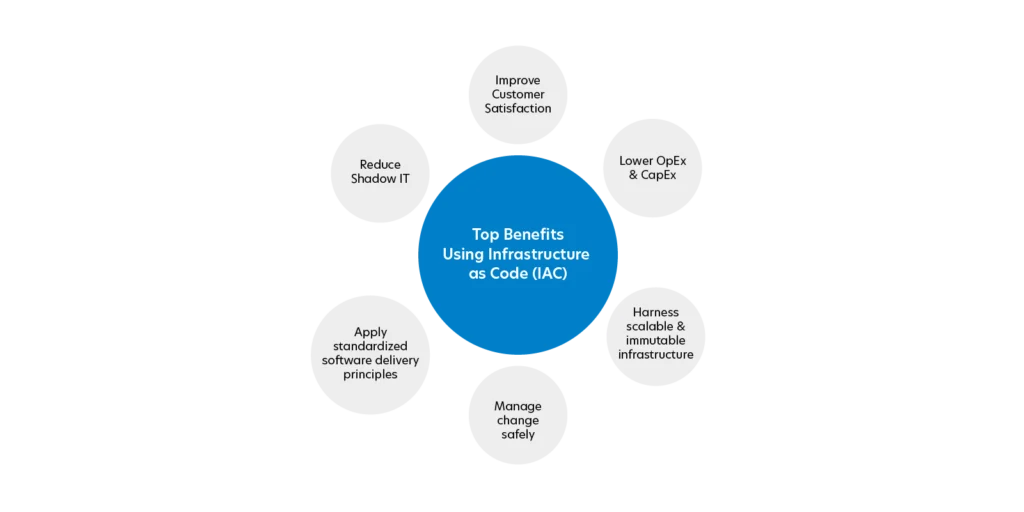
By treating infrastructure as code, organizations can leverage the principles of software development, such as version control, testing, and continuous integration, to create, modify, and deploy infrastructure resources in a repeatable, scalable, and efficient manner. This paradigm shift simplifies the management of complex IT environments, enhances deployment speed, ensures consistency across environments, and reduces the risk of human errors associated with manual configurations.
According to Gartner, by 2027, 70% of I&O leaders will implement at least one hybrid cloud storage use case, which is a significant increase from 25% in 2023.
Hybrid cloud is a strategic IT architecture that combines the use of on-premises, private cloud, and public cloud services to create a unified, flexible, and scalable computing environment. This approach allows organizations to leverage the benefits of both public and private clouds while addressing specific business requirements, regulatory constraints, and performance needs.
In a hybrid cloud setup, workloads can seamlessly move between on-premises infrastructure and cloud environments based on factors such as cost, performance, security, and data sensitivity. This fluidity enables organizations to optimize resource allocation, scale applications dynamically, and maintain control over critical data assets while benefiting from the elasticity and scalability of public cloud services.
Flexibility: Hybrid cloud offers unparalleled flexibility by allowing organizations to deploy workloads where they best fit—on-premises or in the cloud—based on workload requirements, compliance regulations, and cost considerations.
Scalability: Organizations can scale resources up or down dynamically in a hybrid cloud environment to accommodate fluctuating demand, seasonal spikes, or unforeseen events, ensuring optimal performance without overprovisioning.
Data Control: Hybrid cloud provides a balance between the scalability of public cloud services and the control of on-premises infrastructure, giving organizations the ability to manage sensitive data, comply with regulations, and meet security requirements effectively.
Cost Efficiency: By optimizing resource usage and leveraging pay-as-you-go models, organizations can reduce infrastructure costs, improve operational efficiency, and enhance cost predictability in a hybrid cloud setup.
Disaster Recovery and Business Continuity: Hybrid cloud architectures enable organizations to implement robust disaster recovery strategies, replicate data across multiple environments, and ensure business continuity by maintaining redundant systems in different locations.
Innovation Acceleration: Hybrid cloud fosters innovation by providing access to cutting-edge technologies, AI-driven services, and scalable computing resources available in public clouds, empowering organizations to drive digital transformation and create competitive advantages.
The AS/400 represents a legacy midrange computer system renowned for its reliability, integrated architecture, and robust performance capabilities. While traditionally associated with on-premises data centers and established enterprise applications, the AS/400 has evolved to embrace modern IT practices, including the adoption of Artificial Intelligence for IT Operations (AIOps).
AS/400 environments often consist of critical business applications and workflows that require continuous monitoring and optimization. AIOps enables automated incident remediation, proactive resource allocation, and performance tuning by analyzing data from AS/400 systems in real-time.
COBOL stands as a foundational programming language with a rich history in business and enterprise applications. Despite being considered a legacy language, COBOL continues to power critical systems in various industries, demonstrating resilience and longevity.
Many organizations still rely on COBOL-based systems for their mission-critical operations, especially in sectors like finance, healthcare, and government. As the backbone of many mission-critical systems, COBOL remains a cornerstone technology for enterprises worldwide. The challenge lies in maintaining and modernizing legacy COBOL applications, ensuring their stability and compatibility with newer technologies. This is where AIOps tools can integrate with these legacy COBOL applications, extracting data insights, monitoring performance metrics, and automating maintenance tasks within COBOL environments.
With AIOps platforms in use, organizations get enhanced visibility into COBOL environments, providing real-time insights, correlating data across disparate sources, and conducting root cause analysis to identify underlying issues for faster troubleshooting, accurate problem diagnosis, and improved system reliability in COBOL-centric infrastructures.
Want more CX content? Check interesting blogs below!
In an era where digital transformation is reshaping industries, the role of IT infrastructure in driving business success cannot be overstated
Read moreWith the retail industry undergoing significant transformation, retailers can leverage AI for operational efficiency and seamless customer experience
Read moreBusinesses can ride the wave of automation and innovation with AIOps and gain sustainable growth advantage for measurable success
Read moreRequest a free demo of Qinfinite, your AI-powered next-gen platform for operational excellence.
Request Free Demo